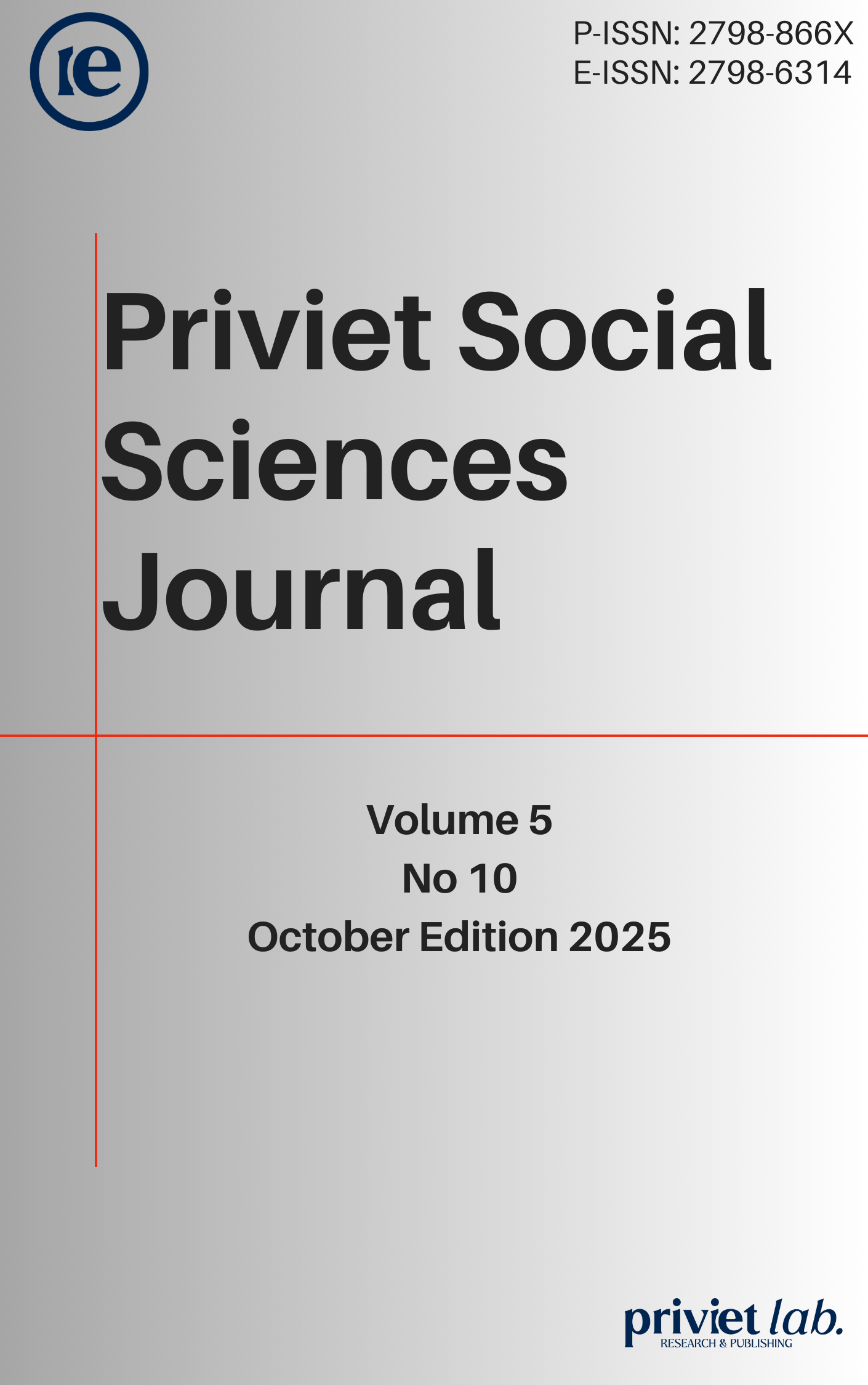Development of the 2D mobile game “Highwash Rush” with the theme of avoiding vehicle obstacles using unity with the MDCL method
DOI:
https://doi.org/10.55942/pssj.v5i10.754Keywords:
2D Game, unity, MDCL, Android, Interactive MultimediaAbstract
Among the most prevalent forms of digital entertainment are two-dimensional (2D) mobile games, which are engaging, readily accessible, and compatible with a wide range of devices. This study sought to design and implement a 2D obstacle-avoidance game using Unity. The development methodology employed is the Multimedia Development Life Cycle (MDLC), comprising six stages: concept, design, material collection, assembly, testing, and distribution. The game, named Highwash Rush, was developed with various control features, including gyroscope sensors, swipe gestures, and directional buttons, and is equipped with a progressive scoring system and sound effects to enhance player experience. Black Box and Alpha Testing conducted on several Android devices demonstrated that the game operated stably, responded effectively, and adhered to the original design specifications. The findings suggest that implementing the MDLC method, excluding the distribution stage, in unity-based educational game development is effective for producing engaging and interactive multimedia applications suitable for practical use.
References
Aleem, S., Capretz, L. F., & Ahmed, F. (2016). Game development software engineering process life cycle: A systematic review. Journal of Software Engineering Research and Development, 4(1), Article 6. https://doi.org/10.1186/s40411-016-0032-7
Aryani, D., Noviandi, N., Siti Fatonah, N., & Akbar, H. (2024). Implementation of the Multimedia Development Life Cycle (MDLC) in solar system application design. International Journal of Science, Technology & Management, 5(4), 726–732. https://doi.org/10.46729/ijstm.v5i4.1123
Atika, S. (2025). Recent Trends and Innovations in Elementary School Educational Game Development: A Literature Review. Jurnal Teknologi Dan Ilmu Komputer Prima (JUTIKOMP), 8(1), 53–63. https://jurnal.unprimdn.ac.id/index.php/JUTIKOMP/article/view/6660
Binanto, I. (2010). Multimedia digital: Dasar teori dan pengembangannya. Andi. (ISBN 978-979-29-1328-6)
Ferdinand, K., Jonathan JM, K., & Haris, D. A. (2024). Innovative Approach of 2D Platformer Mobile Game Development “Super Journey.” Teknika, 13(2), 233–238. https://doi.org/10.34148/teknika.v13i2.857
Jitendra, M. S. N. V., Amiripalli, S. S., Surendra, T., Rao, R. V., & Chowdary, P. R. (2021). A study on game development using unity engine. AIP Conference Proceedings, 2375(October). https://doi.org/10.1063/5.0066303
Maulana, D., Firmansyah, A., & Mawarni, S. (2022). Implementasi Metode Multimedia Development Life Cycle pada Game Visual Novel “Sebelum Kamu Membenciku.” Jurnal Teknologi Informatika Dan Komputer, 8(2), 337–351. https://doi.org/10.37012/jtik.v8i2.1283
Poondej, C., & Lerdpornkulrat, T. (2019). Gamification in E-learning: A moodle implementation and its effect on student engagement and performance. Interactive Technology and Smart Education, 17(1), 56–66. https://doi.org/10.1108/ITSE-06-2019-0030
Prayudha, I. T., & Chotijah, U. (2024). Pengembangan Game Edukasi 2D Mata Pelajaran Ipa Menggunakan Unity Berbasis Mobile. Jurnal Teknik Informatika Dan Komputer, 3(2), 46–52. https://doi.org/10.22236/jutikom.v3i2.15933
Putra, E., Nugraha, A. R., Rahmadi, F., & Habibi, F. (2023). Implementation of MDLC method in development of game learning media. AIP Conference Proceedings, 2641, 040003. https://doi.org/10.1063/5.0128325
Saputra, R. K., & Setiawan, K. (2024). Pengembangan Game 2D Platformer Berbasis Microbit Menggunakan Unity. Jurnal Indonesia : Manajemen Informatika Dan Komunikasi, 5(1), 20–25. https://doi.org/10.35870/jimik.v5i1.420
Downloads
Published
How to Cite
Issue
Section
License
Copyright (c) 2025 Charmiyanti Nurkentjana Aju, Yusran Yasir, Indah Fajrin Kamil Falaq, Dwi Wibisono

This work is licensed under a Creative Commons Attribution 4.0 International License.

















